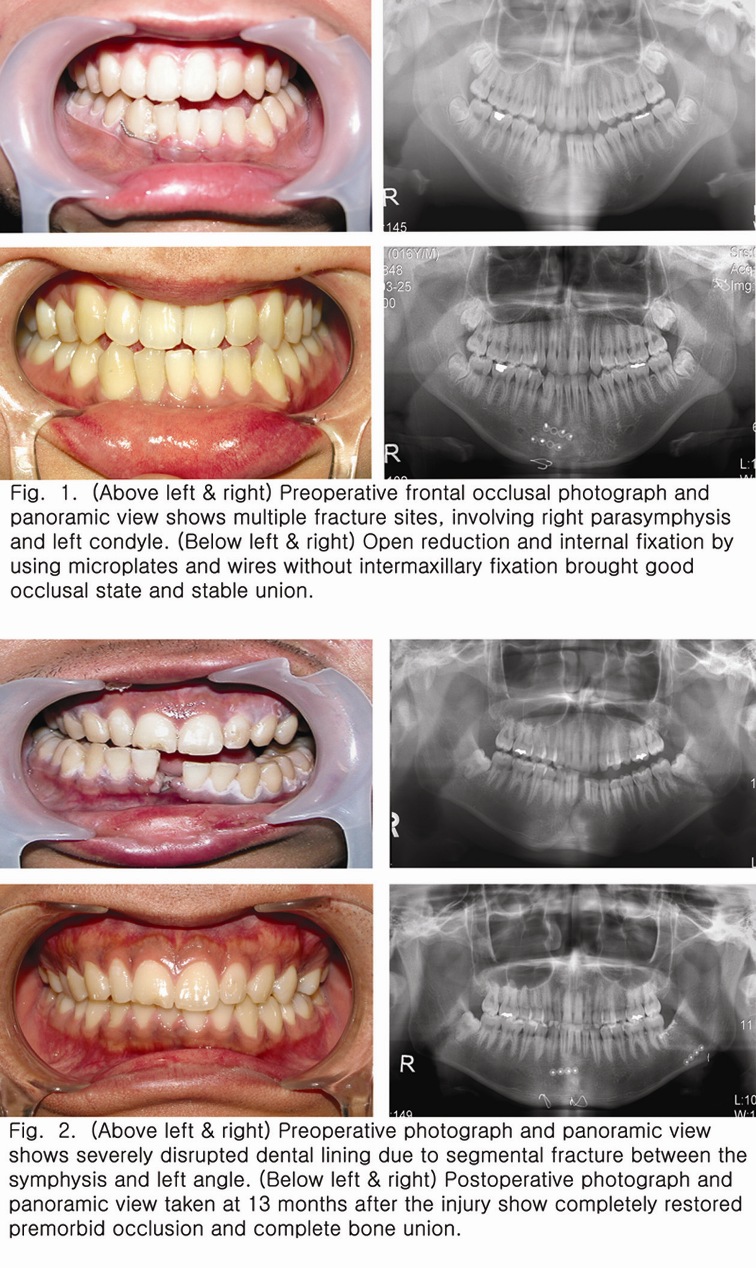Sunday, October 8, 2006
10961
Surgical Treatment of Mandibular Fractures without Intermaxillary Fixation
The principles in treating mandibular fractures consist of precise anatomical reduction, restoration of premorbid occlusion, and rigid fixtation until stable osseointegration achieves. Accordingly, when the dental arch was maintained like in unilateral angle fracture, open reduction and internal fixation without an intermaxillary fixation(IMF) brought satisfactory results. We propose that not only can anatomical reduction and rigid fixation without an IMF provide secure immobilization and correct occlusion in unilateral angle fracture, but also in multiple fractures and comminuted fractures of mandible. Total 32 patients with various types of madibular fractures were treated with OR/IF without applying an IMF. 22 cases had more than 2 fracture sites simutaneously, always involving either symphysis or parasymphysis that resulted in disruption of the dental arch. We used either 1.2mm titanium microplates or 1.7mm low-profile miniplates, and/or wires for bony fixation. In all cases involving symphysis or parasymphysis, an additional simple eyelet method of interdental wiring that held the 4 teeth together was used to bring further stability on the dental lining. Usually, total of two or three points of fixation including an interdental wiring were used for reduction of a fracture site, Pre- and postoperative photographs of occlusion, radiographs, thin paper bite test, and subjective satisfaction at occlusion were analyzed in all cases. Complications such as infection, periodontitis, trismus, loss of weight, non union were not found. 3 cases showed mild degree of open bite, but they were not needed for further orthodontic treatment. Anatomical reduction and rigid internal fixation itself without an IMF can simplify surgical technique, increase compliance and reduce complications. Thus, this method is thought to coincide with basic principles of all other fracture treatments while eliminating the need for IMF.

View Synopsis (.doc format, 160.0 kb)
